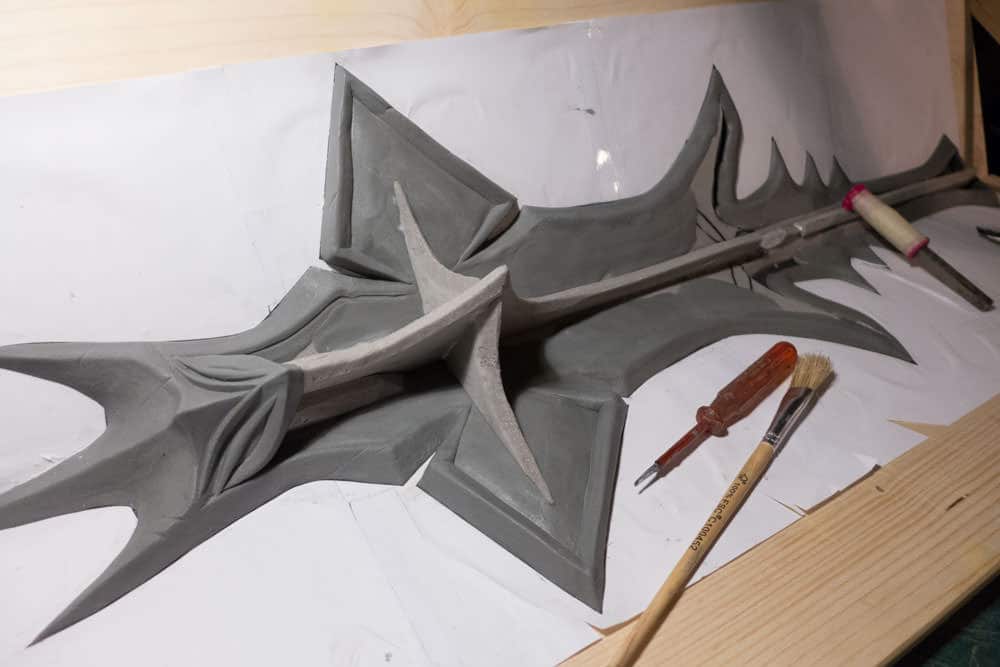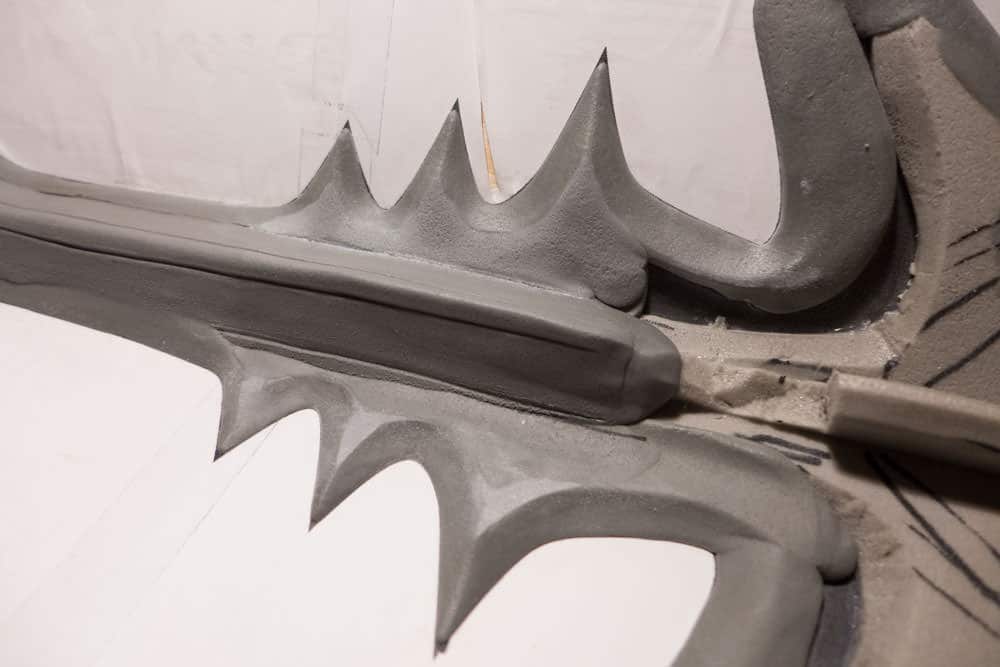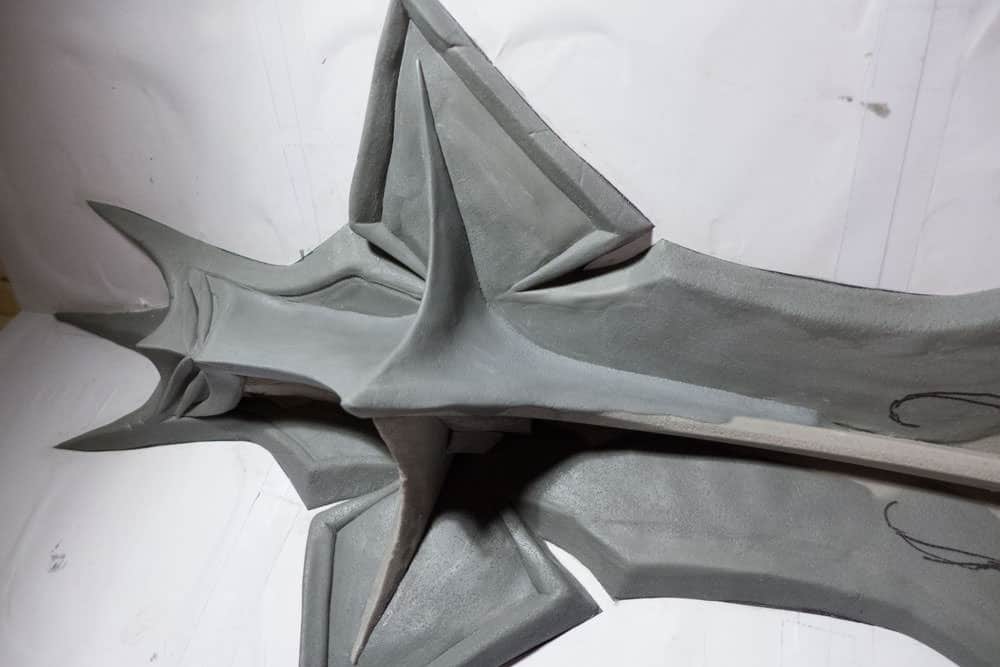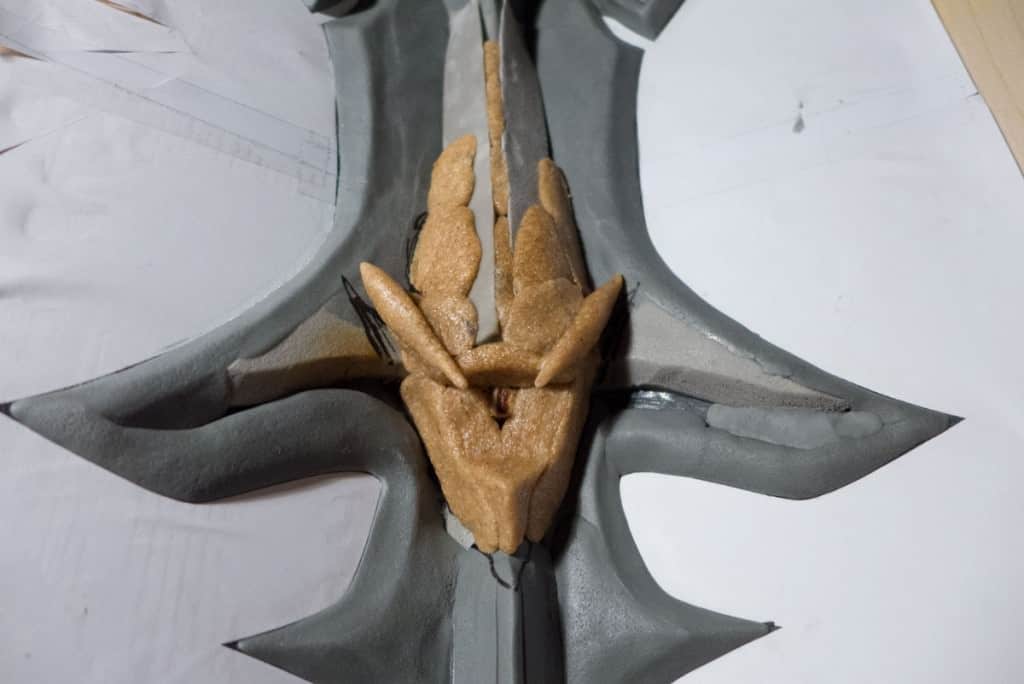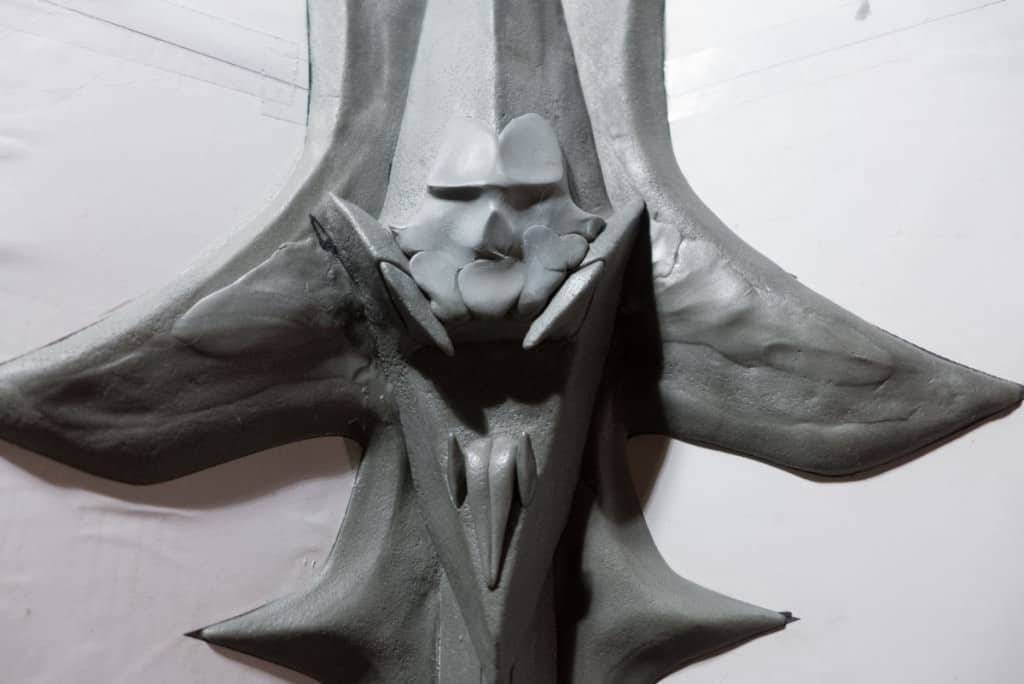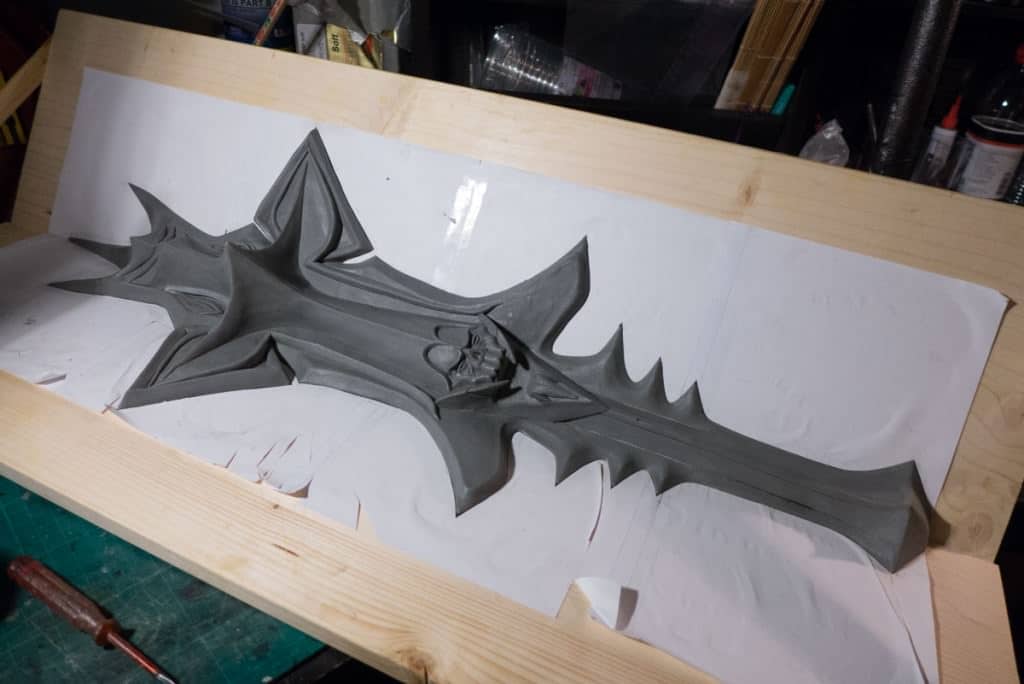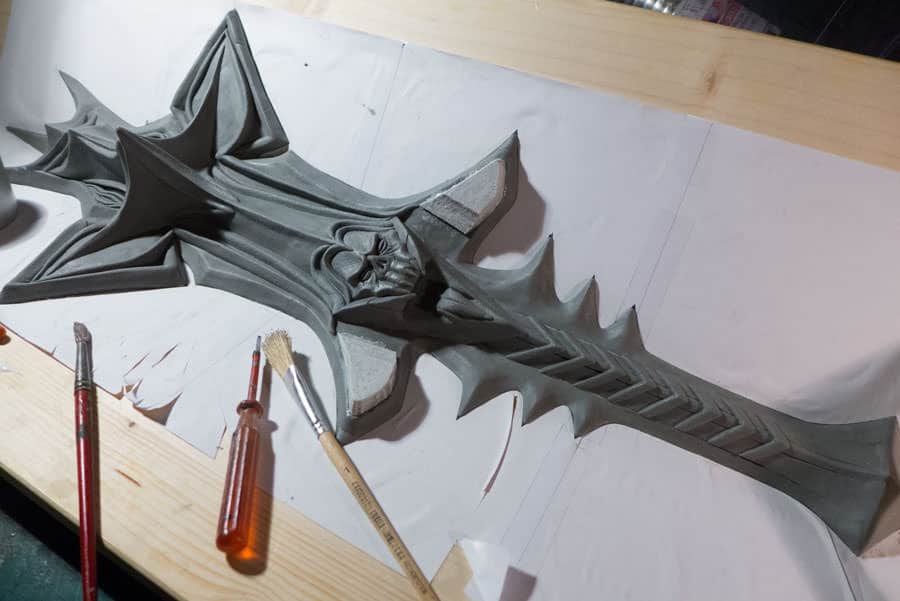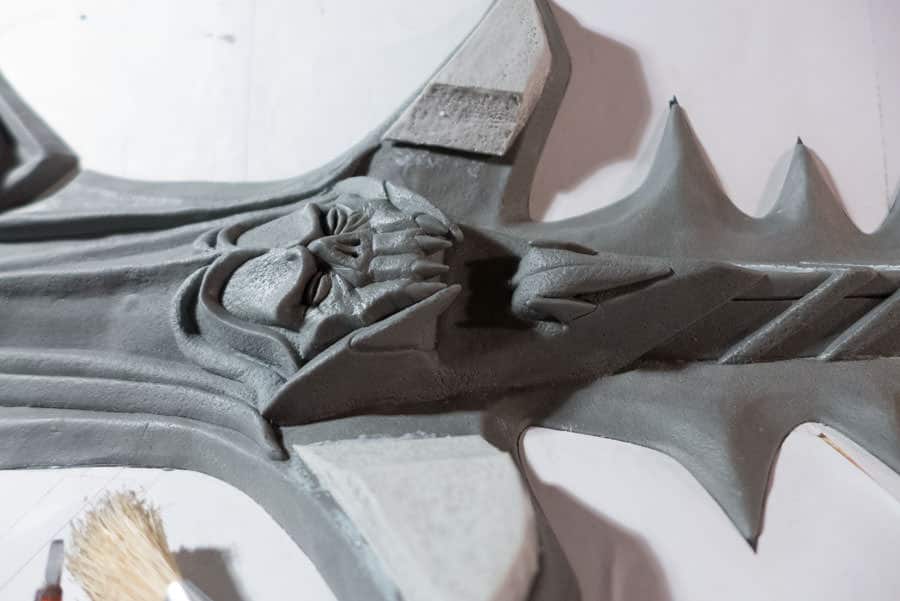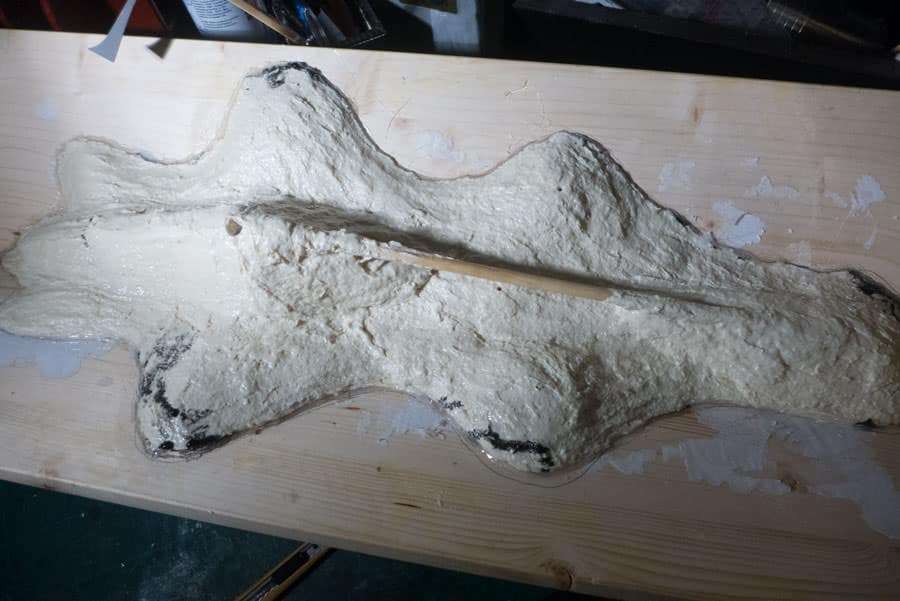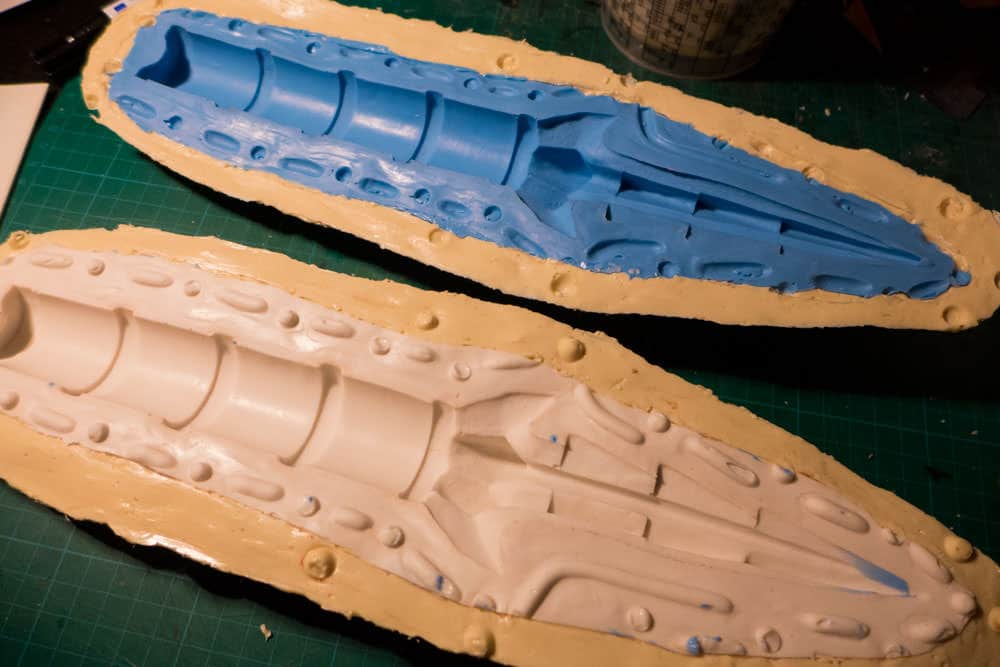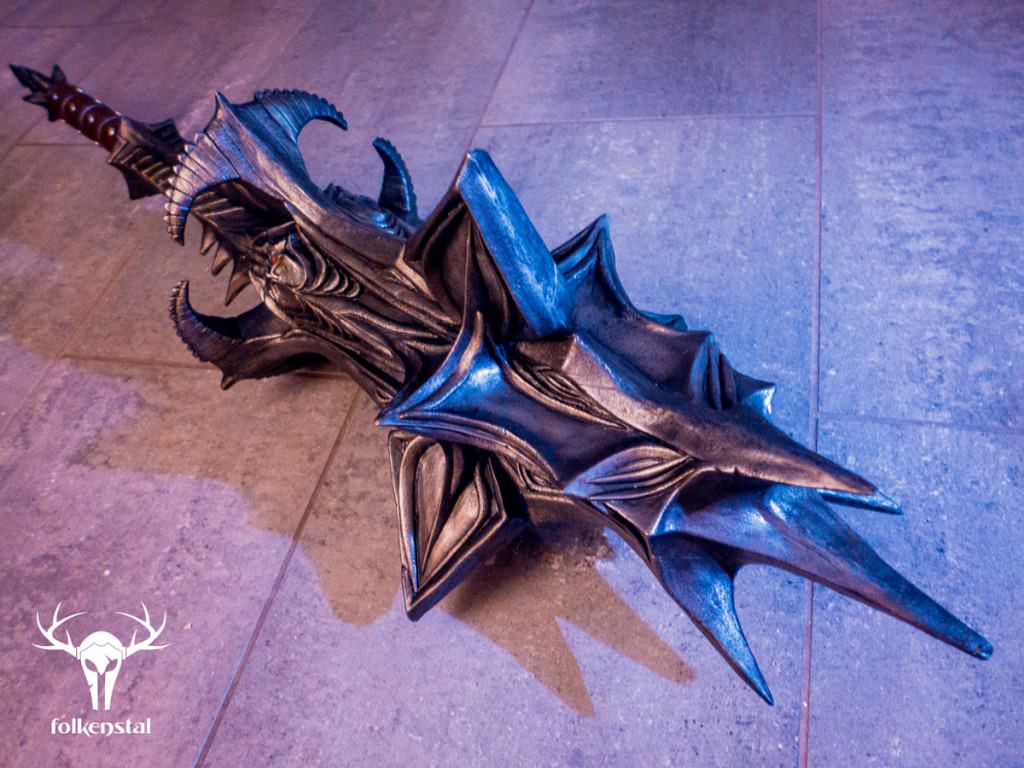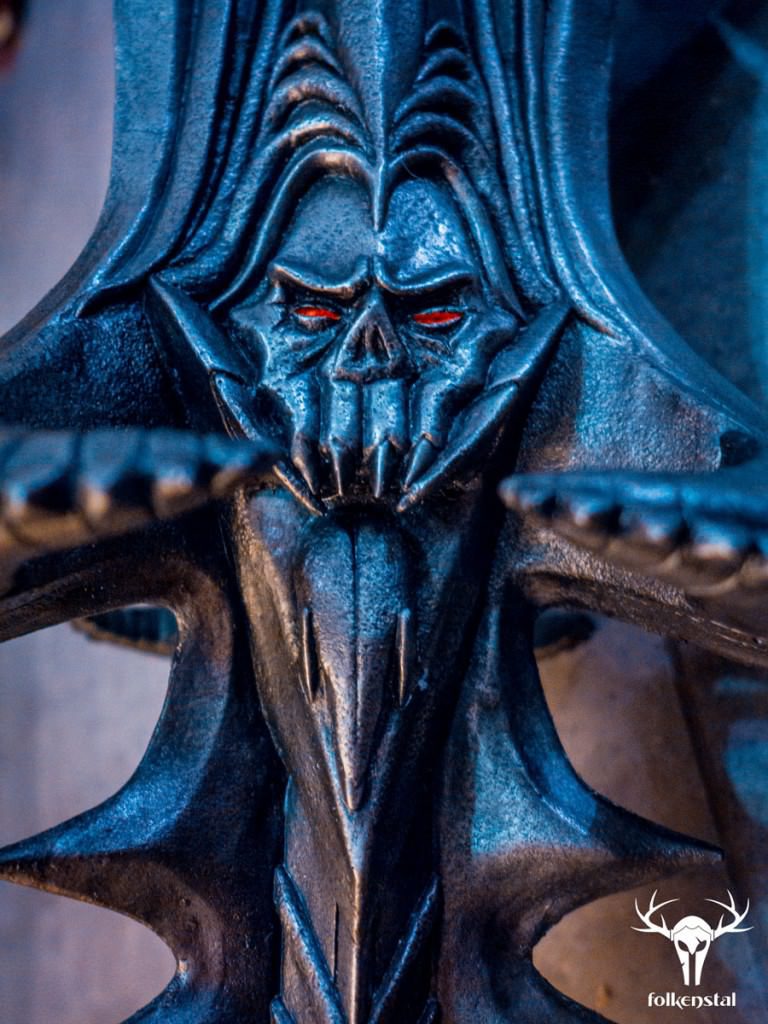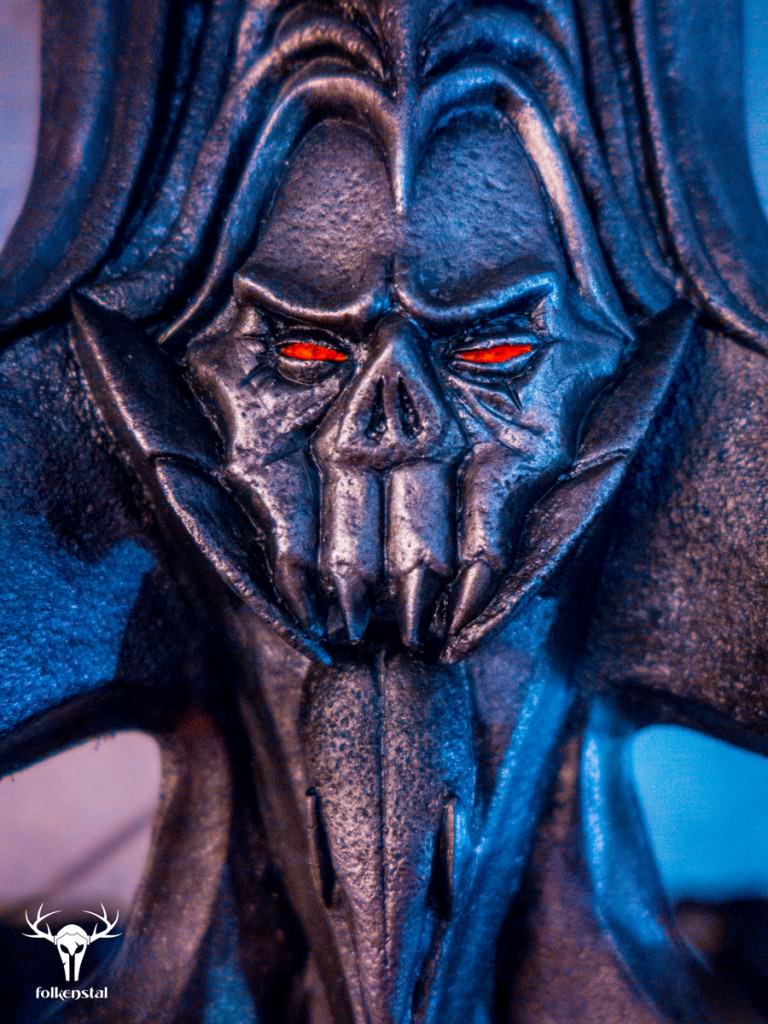The Mace of Molag Bal is made of 3 sides, which feature the same pattern.
Therefor I have to model one side only, make a mold of it and then make 3 copies with resin.

Started out with a base of angled panels, glued the print with the outlines on them, and put a foam base on top.
Apoxie Sculpt is used here to sculpt the details of the mace.




With a brush I add a structure to the surface. The client wanted a rough look, not a smooth finish.
So sanding the mistakes away after sculpting was no option here. I had to sculpt as precise as possible to mantain the rough look.


Each step was well planned here.
Where to start? Where to go next? When to apply a second layer and so on.



